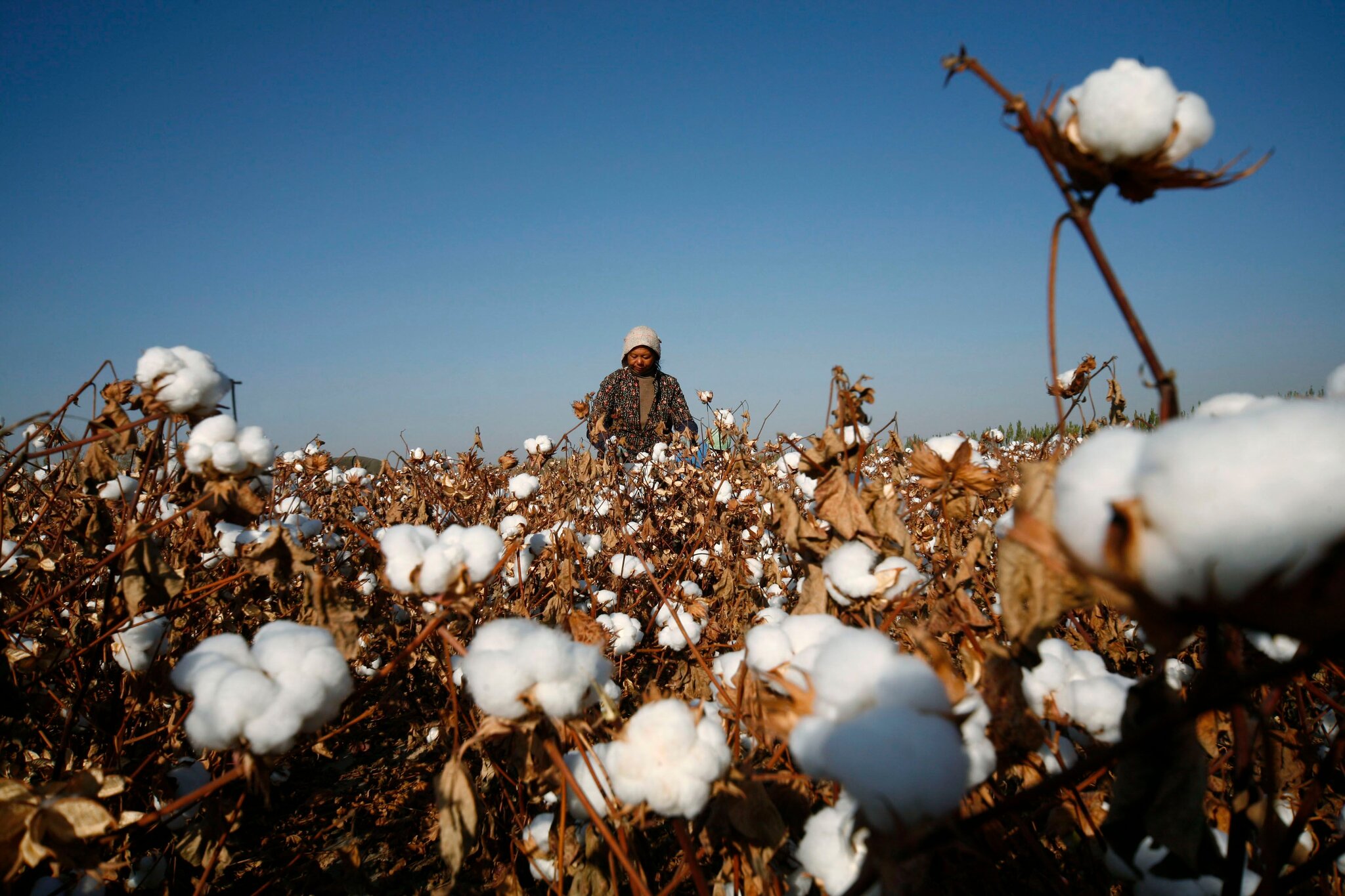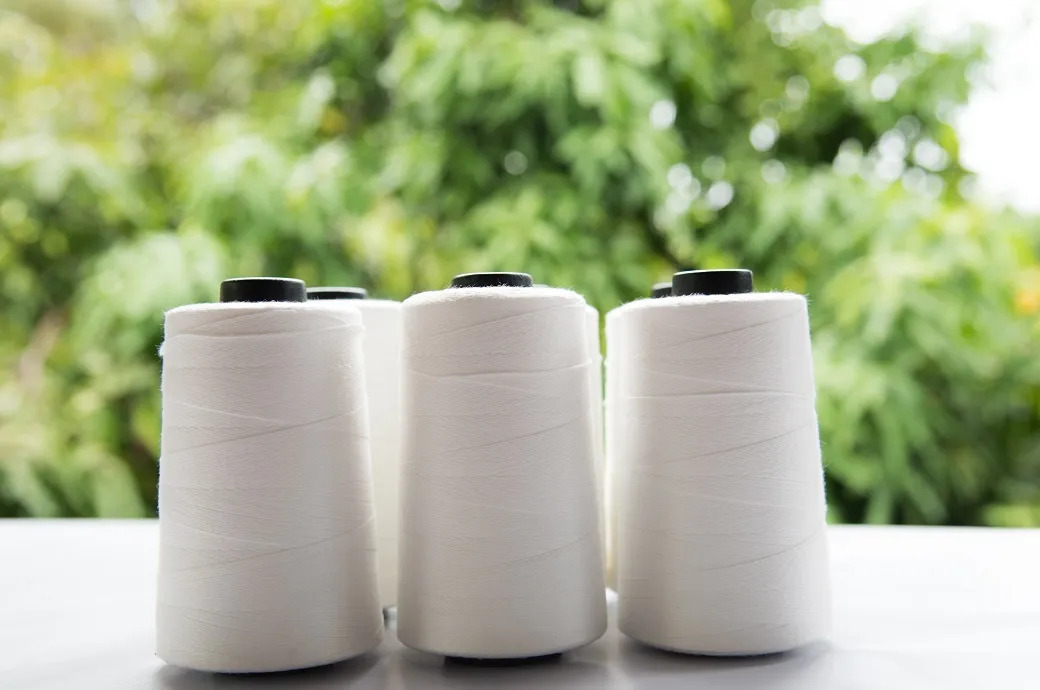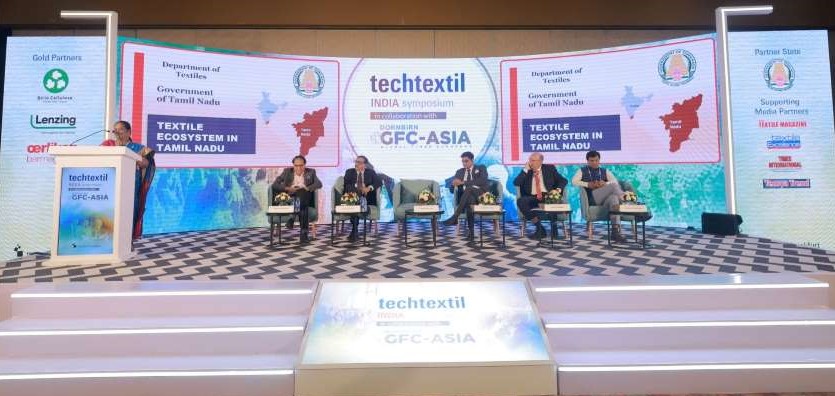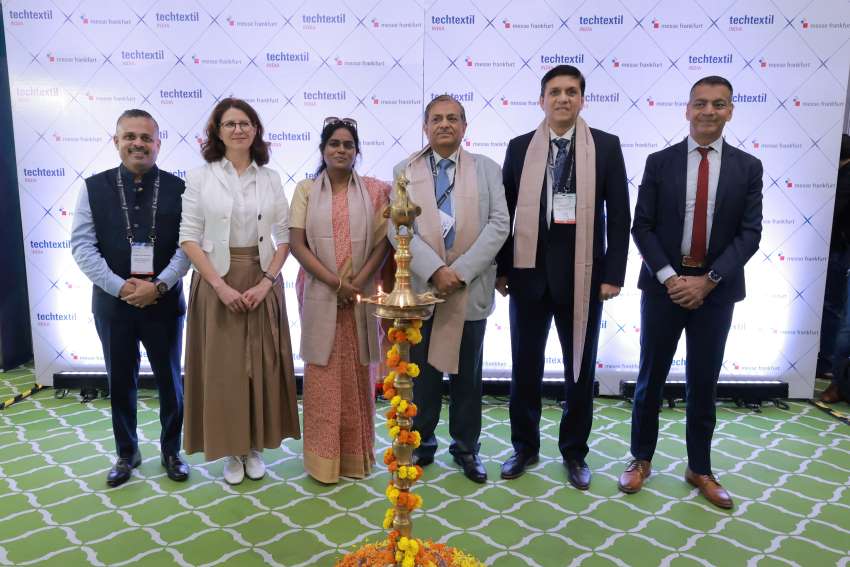FW
For the second time in the current season, the Cotton Crop Assessment Committee (CCAC) of Pakistan has revised cotton production estimates downward to 11.039 million bales against the initial estimates of 14.1 million bales for the current season (2016-17). This came after the second meeting of CCAC that was held to assess the volume of current cotton crop in the country. Hassan Iqbal, Federal Secretary Ministry of Textile Industry is the chairman of CCAC.
In 2015-16, the country had missed the crop production target by around 30 per cent and it remained around 10 million bales which according to the Finance Minister caused a GDP growth of 0.5 per cent. However, according to sources, the prospects for the current season are not very bright as well and the country may face significant shortfall in the crop production as well.
The plant protection department, officials of Trading Cooperation of Pakistan (TCP), cotton growers from Punjab, representatives of Pest warning department, Punjab, members of Pakistan Central Cotton Committee (PCCC) and Pakistan Cotton Ginners Association (PCGA) attended the meeting. The Chair welcomed the participants and appreciated the stakeholders' interest and participation in the process of cotton crop assessment and described the objectives of the meeting.
Cotton Commissioner, Dr Khalid Abdullah discussed the overview of cotton crop production in the country and challenges faced by the cotton crop especially of climate and pests like pink boll worm and white fly. The house was informed that cotton sowing has decreased by 21 per cent in Punjab. However, it was increased by 2 per cent in Sindh, with overall decrease by 15 per cent than the last year. This decrease in area has proportionately depicted in the production as well.
Since India has strength in textile technology and Việtnam is dependent on feedstock for its textile industry from many countries, they could mutually benefit by co-operation, says the Vietmam Chamber of Commerce and Industry (VCCI). On this, Vo Tan Thanh, director of VCCI’s HCM City chapter said that the garment and textile sector happened to be the country’s second largest export earner last year after increasing by 17 per cent to US$ 27.5 billion. Yet, the sector relied heavily on imported raw materials, he averred at the India Textile Machinery Exhibition (IMTE 2016).
Nguyen Ngoc Lan, deputy director general of Nha Be Corporation said that 70 per cent of the feedstock needed for production has to be imported and last year this accounted for around $15 billion. Both Thanh and Lan were of the view that existing and future free trade agreements including the TPP and Vietnam-EU FTA, would open up export opportunities for the sector.
The sector urgently needs to invest in technologies to produce its own raw materials so that it can benefit from the FTAs, especially the TPP, he said. India, the second largest garment and textile producer in the world, has advanced technologies and equipment at competitive prices, offering Vietnamese firms a good choice, he added.
After several years of decline, the fashion cycle appears to slowly be shifting back towards denim. Interest in the once dear item has been building thanks to new styles which include rips and wider bottoms.
Americans have fallen in love with denim again one again and that too at the expense of yoga pants. Amid a debate over whether the athleisure trend is waning away, a search data from Google Trends shows that interest in denim is picking up. Meanwhile, it is learnt that fewer shoppers are showing a requirement for yoga pants.
Jefferies analyst Randal Konik, who published the data in a note to investors, said that brands like Lululemon should watch out. He further said that the athleisure trend is fading away.
The data from Euromonitor confirms this thesis, Konik added. It shows that growth in the sports apparel market has recently slowed to 5 per cent from 7 per cent in years gone by. The category's rate of growth is expected to remain in the 4 per cent to 5 per cent range over the next several years, the analyst noted. Retailers from Macy's to American Eagle have recently said that requirements of denim has been increasing.
Underdeveloped infrastructure, restrictive environment and a lack of trade agreement with key markets have been identified as the main reasons for the unsatisfactory foreign direct investment (FDI) inflow in the Indian textile sector, says a recent study commissioned by the Indian ministry of textiles. Stringent labour laws were also cited as one of the major challenges that hamper the FDI inflow.
In order to attract large scale investments, acquire global scale and bring India at par with other competing countries, there is an immediate need to review the labour laws to make them investor and labour friendly, adds the study. Labour laws restricting women from working in night shifts and the Industrial Dispute Act, 1947 that stipulates that companies employing over 100 people must obtain necessary approvals for lay-offs need to be amended to rectify the situation. Despite India offering a large domestic market, competitive labour costs and a well working democracy, its performance in attracting FDI flows has been far from satisfactory. The country's weakness lies in underdeveloped infrastructure and restrictive operative environment and lack of trade agreement with key markets, notes the study.
Apparel and textile exporting nations like Bangladesh, Vietnam, Turkey, Cambodia and Pakistan have duty advantage ranging from 10 to 30 per cent for different products in the US and EU markets. This advantage enables them to achieve exports growth rates higher than that of India, according to media reports.
All eyes are set on the 2016 Autumn Edition of Intertextile Shanghai Apparel Fabrics to be held from October 11-13, 2016. With close to 4,600 exhibitors from 29 countries and regions, the show will feature an all-encompassing selection of products across 10 halls in the National Exhibition and Convention Center, Shanghai.“After 22 years of development, Intertextile Shanghai has become the world’s most comprehensive trade and communication platform for the textile industry, providing an unrivalled range of fabrics & accessories and establishing its leading status in the industry,” said Wendy Wen, Senior General Manager, Messe Frankfurt (HK) Ltd.

All eyes are set on the 2016 Autumn Edition of Intertextile Shanghai Apparel Fabrics to be held from October 11-13, 2016. With close to 4,600 exhibitors from 29 countries and regions, the show will feature an all-encompassing selection of products across 10 halls in the National Exhibition and Convention Center, Shanghai.“After 22 years of development, Intertextile Shanghai has become the world’s most comprehensive trade and communication platform for the textile industry, providing an unrivalled range of fabrics & accessories and establishing its leading status in the industry,” said Wendy Wen, Senior General Manager, Messe Frankfurt (HK) Ltd.
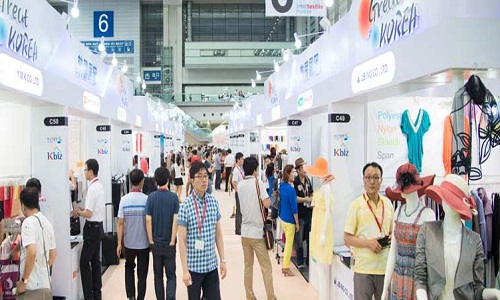
To offer exhibitors and buyers an easy access to the entire event spread, the extensive array of products is grouped in various ways. International halls encompassing 5.2 & 6.2 will host over 1,100 exhibitors. The ever-popular SalonEurope features the finest European-made products in the France, Germany, Turkey and MilanoUnica Pavilions, as well as from individual exhibitors from the Czech Republic, the Netherlands, Portugal, Slovenia, Spain, Switzerland and the UK. The Asia pavilion is also no less with participation from India, Indonesia, Japan, Korea, Taiwan and Thailand, plus the brand new Hong Kong Pavilion showcasing some of the most popular and innovative products in the Asian market.
Meanwhile, cutting-edge and creative textile materials and fabrics can be found in seven Group Pavilions organised by the industry’s leading firms and associations including DuPont, Hyosung, INVISTA, Lenzing and OEKO-TEX, as well as the Korea Textile Trade Association (KTTA) and the Korea Chemical Fibers Association (KCFA).
Aimed at fulfilling market demands, six distinctive product zones bring together the top suppliers from various spectrums to provide visitors extensive range of high-quality sourcing options. These zones include:
• Accessories Vision (hall 4.1): Over 500 international and domestic exhibitors will present the latest fashion and garment accessories. An Accessories Trend Forum is also included to display the next seasons’ fashion accessories under three domestic trend themes
• All About Sustainability (hall 5.2): Increasing by 10% in scale, all kinds of sustainable products and services will be demonstrated in three main sections: Educational Zone, eco Boutique and ForumSpace
• Beyond Denim (hall 7.2): Over 170 exhibitors will exhibit the newest denim products, such as denim yarns, fabrics, accessories and production machinery under the new concept ‘Brooklyn Today’,while the Beyond Denim Forum will illustrate the evolution of denim’s 200-year history.
• Functional Lab (hall 5.2): The returning INVISTA Pavilion, the debut Taiwan Pavilion, plus exhibitors from China, Hong Kong, Israel, Japan and Korea will present some of the world’s most advanced fabrics with various functions such as thermo-regulation, moisture wicking, increased durability, elasticity, windproof and more.
• Premium Wool Zone (hall 6.2): An exclusive platform to explore premium wool and cashmere fabrics brought by high-quality suppliers from France, Japan, Peru, the UK and elsewhere
• Verve for Design (hall 6.2): Well-known design studios from Australia, France, Italy, Japan, Korea, Russia, Switzerland, Thailand and the UK will impress and inspire visitors with their newest original fabric designs.
Intertextile Shanghai is just not a platform for the meeting of minds, it offers learning experiences to the industry by way of Fringe Programmes. This programme aids visitors in exchanging technical know-how and discover different industry perspectives. Events in the programme include the A/W17-18 Intertextile Directions Trend Forum(hall 6.2), Trend Tours led by top trend forecaster I.S. Planning, theFrankfurt Style Award display (6.2-E02), Fabrics China Trend Forums (halls 4.1, 5.1, 6.1, 7.1, 7.2 and 8.2), China International Fabrics Design& amp; Fabrics Creations Competitions, as well as a number of seminars, aDigital Printing Forum and panel discussions. Intertextile Shanghai Apparel Fabrics – Autumn Edition 2016 is co-organised by Messe Frankfurt (HK) Ltd; the Sub-Council of TextileIndustry, CCPIT; and the China Textile Information Centre.
Paving the way for fixed-term employment in the apparel manufacturing sector, the Labour Ministry has notified the amendments in the Industrial Employment (Standing Orders). The decision on the part of the government would facilitate employment of workers in apparel manufacturing on fixed term basis in the backdrop of seasonal nature of sector and would also ensure same working conditions, wages and other benefits for fixed term employee in the sector as a regular employee.
On the termination of fixed term employment, the workman will not be entitled to any notice or pay, the notification reads. However, the move has been criticised by the central trade unions (CTUs) including the Bhartiya Mazdoor Sangh (BMS) that termed the same as anti-worker.
Fixed term worker will also be eligible for all statutory benefits available to a permanent workman proportionately according to the period of service rendered by him even though his period of employment does not extend to the qualifying period of employment required in the statute, the notification added. This is one of the measures approved under the Rs 6,000 crore package for the textile sector announced in June this year.
The Task Force on Commercial Standardization of Instrument Testing of Cotton (CSITC) with an active cooperation of the Bremen Fiber Institute (FIBER) and the United States Department of Agriculture (USDA)- American Mathametics Society (AMS) has completed the Round Trial 3 with better results than ever before. It is headed by the International Cotton Advisory Committee (ICAC).
This again confirms the continuous trend towards better evaluations during the last years of the CSITC Round Trials. It also means that the variation of test results between the instruments is this time lower by 30 per cent than it typically was from 2007 to 2011.
It’s good news that all participating laboratories are benefiting from their participation in the CSITC Round Trials and improving their performance. One hundred six (106) testing facilities within more than 30 countries participating with their cotton classification instruments in this Round Trial are located in Africa, Asia, Australia, Europe, North and South America.
It so happens that four samples are sent to each participant laboratory an equal number of times a year. These are tested on their instruments. Based on the Accuracy for Micronaire, Strength, Length, Length Uniformity, Reflectance (Rd) and Yellowness (+b), an Overall Evaluation Grade is given for each instrument which confirms the participants’ ability to provide reproducible test results that are based on the established international standards.
Given the rise in Ice Futures at the New York Stock Exchange, Brazilian cotton prices continued to head North in late September. The prices of the commodity also grew on expectations of low cotton availability until the beginning of harvesting of the new crop. Cotton buyers too expressed higher interest in purchasing, while sellers remained firm in asking prices.
The Centre for Applied Studies in Applied Economics (CEPEA)/Escola Superior de Agricultura (ESALQ) Index for payment in 8 days for cotton type 41-4, delivered in São Paulo increased 2.77 per cent closing at BRL 2.5244 or $0.7764 per pound on September 30. Quoting data from the Brazilian Commodity Exchange, the CEPEA said 73.8 per cent of the Brazilian 2014/15 cotton crop forecast at 1.563 million tons had already been traded until late September. Of this, 50.8 per cent was sold in the domestic market and the rest in the international market.
As regards to the 2015/16 crop projected at 1.289 million tons, 60.4 per cent had already been traded in September. Of this total, 43.9 per cent was sold in the local market and the rest in the global markets.
Yarn Expo Autumn, one of the most important annual events in the Asian yarn and fibre industry, is all set to return next week. To be held from October 11 to 13 at the National Exhibition and Convention Center , Shanghai, the Fair would have a record number of exhibitors and exhibition space.
While the number of exhibitors has seen a rise from 258 in 2015 to over 270 this year, the exhibition area has been enlarged by 35 per cent to 11,500 sqm. Among the participants would be people from 12 countries and regions like Mainland China, Hong Kong, Bangladesh, India, Indonesia, Korea, Pakistan, Singapore, Switzerland, the US, Uzbekistan and Vietnam.
Yarn Expo has long been renowned for its product diversity, with a wide range of exhibitors from both established yarn and fibre producing countries as well as emerging producers. Among these are the India Pavilion and Pakistan Zone with the former consisting of 36 companies and the latter of more than 20 exhibitors showcasing competitively priced, high quality cotton yarns. One up-and-coming country is Uzbekistan, whose exhibitors have proved popular in recent editions and are bringing their cotton yarns to the Chinese market this edition.
Apart from cotton yarns, there also exists a strong demand for synthetic yarn and fibre products in China that overseas suppliers from Indonesia, Korea, Taiwan and Thailand are looking to take advantage of the Expo. Last but not least, the Birla Pavilion will make its debut in Yarn Expo. Fourteen well known manufacturers specialising in Birla Modal, Birla Spunshades and Birla Viscose fibres will showcase their latest collections at the show. Given their advantages compared with traditional dyed products, including avoidance of dyeing, lower consumption of water, lower cost of production, and longer lasting and uniform colours, Birla Spunshades fibres are sure to attract much interest from buyers at the fair.
According to the Aditya Birla Group, the organiser of the Birla Pavilion, this product has a lot of potential in the Chinese market as it can provide new opportunities for manufacturers who are looking for new ways to grow their business. Birla Spunshades can be widely applied in woven wool fabrics, sweaters, leggings, home textiles, denim and even the non-wovens sector.
A surge in demand for 19 micron and finer wool helped lift the Awex benchmark Eastern Market Indicator 10 cents back to 1300 c/kg this week, said a report of the Australian Wool Innovation Market. Awex senior market analyst Lionel Plunkett revealed that delayed shearing due to widespread wet weather as well as a public holiday in three states contributed to a small national total of 27,627 bales this week.
Brokers passed in 5.4 per cent of the 36,849-bale offering with the $A-US exchange rate at US76 cents and the EMI in US dollar terms down 5 cents to US 988 cents. This is said to be the smallest total for a sale in the July-to-December period in three years, Plunkett added. After eking out a 3-cent increase last week, there was further recovery of this sale.
This lifted the Awex-Emi to a 10 cent gain and closing the week back at 1300 cents. Further, the report said that an unseasonal lack of quantity due to adverse weather conditions combined with a spike in demand for prompt to near-shipment has led to the evener pricing.






